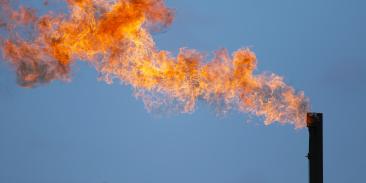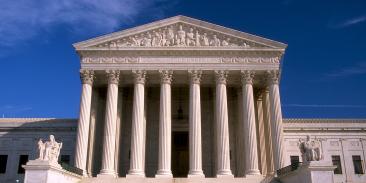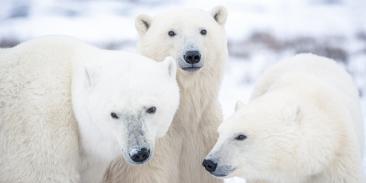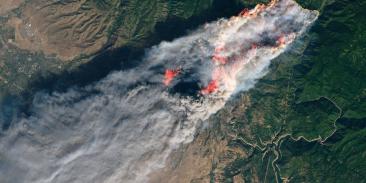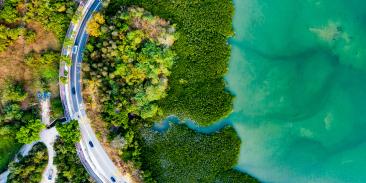New Analysis Finds Indigenous Lands and Protected Areas Are Key in Slowing Deforestation; Without them Brazilian Amazon Forest Loss Would be 35% and Carbon Emissions 45% Higher
With the Amazon on the cusp of an irreversible tipping point, placing more forests under Indigenous or government protection would prevent up to an additional 20% of deforestation and 26% of carbon emissions by 2030
NEW YORK (October 28, 2025)—New research released by the Environmental Defense Fund (EDF) in the lead up to international climate talks in Belem, Brazil, finds that designating 63.4 million hectares of currently unprotected Brazilian Amazon forests as either Indigenous lands or protected areas would prevent the loss of these forests due to land grabbing, cattle ranching, soy farming or other destructive activities. Shoring up the protection of this vulnerable forest area would shrink deforestation totals across the entire Brazilian Amazon by up to 20% — or 2.5 million hectares — by 2030. It would also reduce total carbon emissions linked to deforestation by up to 26% — 1.2 GtCO2e, the current equivalent of Japan’s annual emissions — by 2030.
The analysis, “The Importance of Protected Areas in Reducing Jurisdictional Deforestation in the Legal Amazon,” also finds that current Indigenous lands and other protected areas will prevent an estimated total of 4.3 million hectares of deforestation between 2022 and 2030 in the nine Brazilian states containing Amazon rainforest, avoiding the total emissions of 2.1 GtCO2e — more than the annual carbon emissions of Russia, or approximately 5.6% of the world’s annual emissions.
“Eliminating tropical deforestation is critical for stabilizing our global climate, yet the solution is straightforward. Ensuring that vulnerable forests currently in limbo and under extreme threat are signed over to Indigenous Peoples or designated as protected will have a profound impact on the fate of these forests,” said Steve Schwartzman, Associate Vice President for Tropical Forests at EDF. “As delegates gather for COP30, it’s critical that they’re armed with evidence that points to the most effective solutions", he added.
Scientists warn that deforestation in the Amazon, the world’s largest rainforest, is perilously close to an irreversible tipping point, precipitating a change in climate that would impact the world’s weather patterns. A significant body of research shows that lands managed by Indigenous Peoples have lower deforestation rates and store significantly more carbon than other areas. Between 1985 and 2020, 90% of Amazon deforestation occurred outside of Indigenous lands, making them the most protected areas in the Amazon, with just 1.2% of native vegetation lost over that period.
The Amazon territories managed by Indigenous Peoples with recognized land rights have sequestered far more carbon than they’ve emitted. Between 2001 and 2021, they released around 120 million metric tons of CO2 annually while removing 460 million metric tons. The total of 340 million metric tons removed is the equivalent of the U.K.’s annual fossil fuel emissions.
As countries prepare to present their Nationally Determined Contributions (NDCs) at COP30, Indigenous Peoples in Brazil have pushed for governments to include the recognition of Indigenous lands, support Indigenous-led climate solutions, and greater legal protections for Indigenous lands in their plans.
The researchers drew from a wide range of environmental, economic and geographic data sets and maps to project deforestation rates and resulting carbon emissions. Among the nine data collections they used, the set focused on Indigenous Peoples came from National Indigenous People Foundation (FUNAI), the Brazilian government body that establishes and carries out policies relating to Indigenous Peoples.
To determine the likelihood that currently undesignated forests will be cut down, they used the land prices for cattle ranching and agriculture to represent the economic incentives for cutting down forests. They cross-checked this with geographic and environmental factors — including current deforestation trends — that also influence how likely it is that a forest will be felled for profit.
The nine states of the Legal Amazon — Acre, Amapá, Amazonas, Mato Grosso, Maranhão, Pará, Rondônia, Roraima and Tocantins — contain approximately 60% of the entire Amazon rainforest, which spans eight South American countries. Of the region’s total area of 510 million hectares, in 2022, around 393 million hectares were covered by native vegetation in the Amazon, Cerrado and Pantanal biomes, and by 2021, 112.5 million hectares had been deforested. The nine states also rank among the poorest in Brazil; of the 28 million people who live in these states, 36% live in poverty.
“Protected areas in the Brazilian Legal Amazon are critical for the preservation of native vegetation, carbon stocks, biodiversity, the provision of ecosystem services and the livelihoods of indigenous people and local communities. Our model captures that protected areas avoid deforestation inside its boundaries and beyond due to spatial interactions across the landscape,” said Breno Pietracci, an environmental economist consultant and lead report researcher.
In the new research, the northwest states of Roraima and Amazonas prevent the most deforestation through designated Indigenous lands and other protected areas. Of the 63.4 million hectares of undesignated public forest, almost two-thirds were in Amazonas.
| State | % Increase in deforestation without Indigenous lands or other protected areas |
|---|---|
| Acre | 28% |
| Amazonas | 59% |
| Amapá | 46% |
| Mato Grosso | 14% |
| Maranhão | 11% |
| Pará | 43% |
| Rondônia | 41% |
| Roraima | 71% |
| Tocantins | 14% |
| TOTAL | 35% |
“The economic risks of deforestation and the climate change that deforestation feeds always outweigh short-term economic development results," said EDF’s Schwartzman. “There is no solution for climate change without tropical forests, and the Amazon — the world's largest — should be valued and protected without further hesitation.
With more than 3 million members, Environmental Defense Fund creates transformational solutions to the most serious environmental problems. To do so, EDF links science, economics, law, and innovative private-sector partnerships to turn solutions into action. edf.org
Latest press releases
-
Groups File Lawsuit Challenging Trump EPA Final Rule That Delays Methane Pollution Protections from Oil and Gas Industry
December 4, 2025 -
New Statewide Survey: As Electricity Demand and Costs Skyrocket, Arizonans Support Building More Wind and Solar Energy
December 4, 2025 -
Trump Administration Announces Plan to Weaken Fuel Economy Standards for Cars and Trucks
December 3, 2025 -
Trump EPA Proposal Lowballs Risk of Cancer-causing Formaldehyde
December 3, 2025 -
New York Finalizes Greenhouse Gas Reporting Requirements for Major Polluters
December 2, 2025 -
Canada-Alberta MOU a Disappointing Retreat on Oil & Gas Methane Regulation
November 27, 2025

